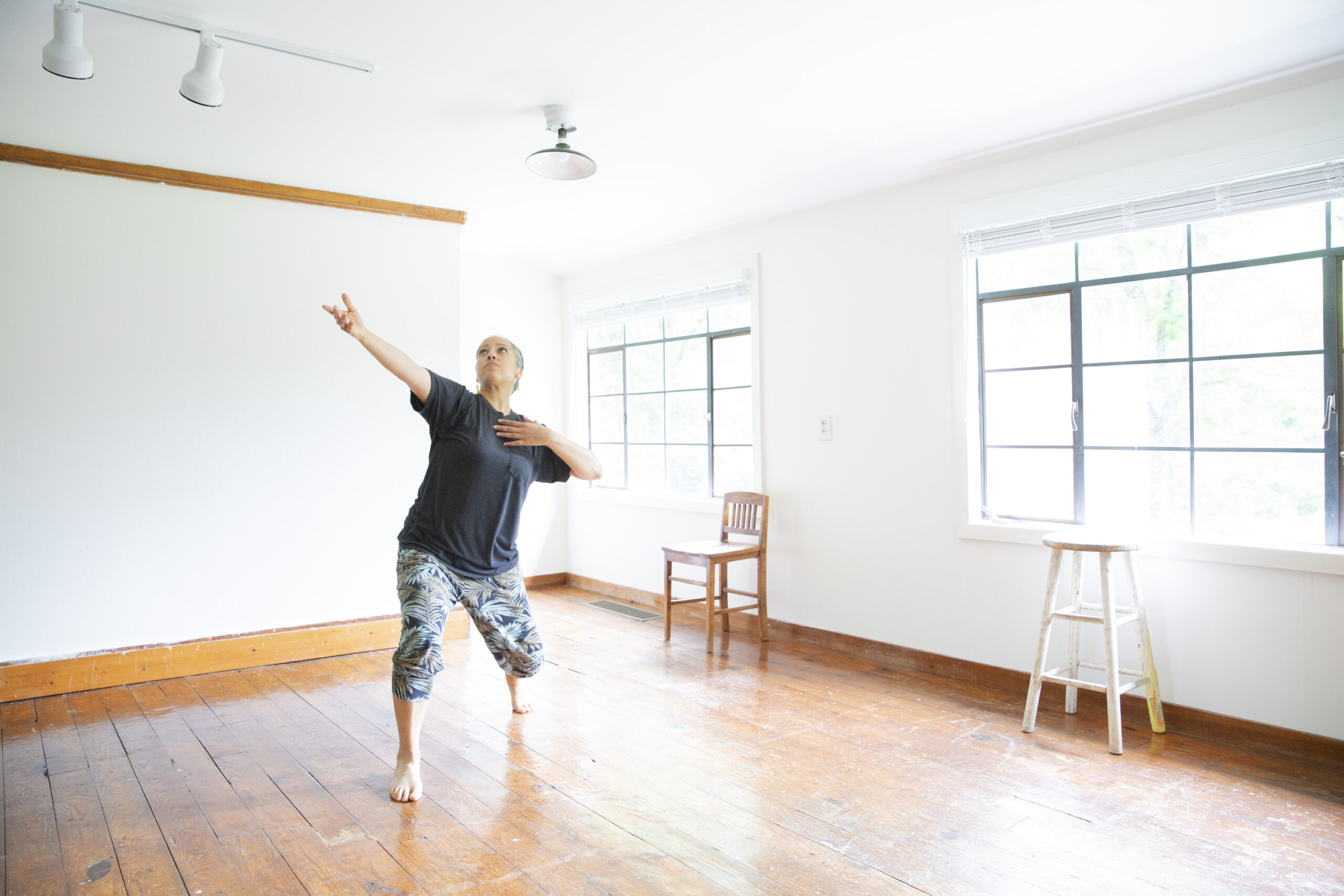
Dr. Julie B. Johnson’s entry point into dance began as a toddler, taking a creative movement class held at her mother’s daycare in Baltimore, Maryland. Johnson says her mother hired a dance teacher for the children since “she felt the arts were a vital mode of expression of our humanity.” That ethos has been the inspiration throughout Johnson’s career.
She went on to study at the Baltimore School for the Arts and received her undergraduate degree in dance from Marymount Manhattan College. She then completed a master of science in nonprofit management from The New School and earned her doctorate at Temple University’s Boyer College of Music and Dance. Johnson joined Spelman College, a historically Black women’s college, in 2016, where she currently serves as an assistant professor and the chair of the Department of Dance Performance & Choreography.
Johnson spoke with Dance Teacher about her many role models in the dance field, how she fosters agency and empowerment among her students, and how she amplifies the lived experiences of Black women through her creative practice, Moving Our Stories.

What do you love most about working at Spelman?
First, the students. They are energized, brilliant, dedicated, determined, creative, skilled, and hungry. They challenge us faculty in the best ways to keep up with them. I would also say to be on a campus that is steeped in Black womanhood in all of its beauty, power, and complexity is transformative and uplifting. It’s what first brought me to Spelman. Our curriculum centers the choreographic process through the lens of Black feminist theories, contemporary dance techniques, and interdisciplinary collaborative practice. We’re in the position of shepherding the next generation of Black woman choreographers, dance scholars, and interdisciplinary leaders, preparing them to not only carve their own spaces in the field, but to shape what it will look like in the future.
What challenges do you face in teaching today’s generation, and how do you navigate that?
I try to frame challenges as opportunities to learn more. I am learning a great deal now about how today’s generation of dance students communicates, processes information, and absorbs experiences post-pandemic. I find it fruitful to hear from their perspectives.
What’s been the best advice you’ve received as a dance educator?
Framing challenges into opportunities is definitely something that was passed down to me. Also, leading with curiosity. Asking more questions. Trying my best not to jump to conclusions, assumptions, or project my own perspective on a situation. Finding out how much I can learn about a situation from all angles.
Have you had a role model in your career as a dance educator?
There are too many to name. Dr. Kariamu Welsh, who passed away in 2021, was a renowned choreographer, dance scholar, author, and educator that I had the honor of working with at Temple University. I also had the pleasure of working with Dr. Brenda Dixon-Gottschild at Temple University and the Coalition of [Diasporan] Scholars Moving. My predecessor at Spelman, Dr. Veta Goler, was here for 33 years. She had so much to share, and I’m grateful for the chance to have worked with her. My longtime mentor and collaborator Dr. Jane Alexandre, who led many initiatives I’ve had the honor of working on, including The Dancer-Citizen journal, for which I serve as founder/consulting editor.
Other people I have really looked up to are Jawole Willa Jo Zollar, founder/visioning partner of Urban Bush Women, who I have not worked with directly but have admired from afar; Liz Lerman; and Celeste Miller. These are all women who center inquiry and embodied research, community-oriented practice, and pedagogical methods that are simultaneously rigorous, generous, and liberatory.
What is one thing that makes your teaching style unique?
For me, it’s the mantra of treating every class like its own community. I start every semester co-creating community working agreements with my students for each course so that they understand their agency and the value of their ideas and perspectives. I make sure they have a sense of empowerment. We write them on big poster paper and stick it on the wall. We make a list of statements like “You’re at the wheel of your own experience,” so that means you are in charge of your own body and how you take care of yourself in the space. “Try on” is another example. “Try on” means that this might be new to you or might feel uncomfortable, but try it on anyway; trust the process and see how it feels.
You see this practice a lot in social justice organizing spaces, and I think it is equally important in creative spaces and in our dance classroom.
Can you tell us about your work with Moving Our Stories?
Moving Our Stories uses embodied memory mapping and participatory dance to amplify the lived experiences, histories, and bodily knowledge of Black women as a strategy towards collective liberation and restoration for everyone. It invites community into a process to engage in embodied research together, explore, and generate movement around a particular question, idea, or provocation. For the past four years, I have facilitated a collaborative endeavor called Idle Crimes & Heavy Work, which explores Georgia’s history of incarcerated labor through the lens of Black women’s experiences, resistance, and restoration. My core collaborator for this project was Tambra Omiyale Harris, artistic director of Giwayen Mata, an all-sister African dance, percussion, and vocal ensemble in Atlanta. I have also been working on a participatory dance film series called “For the Record… Dances to Stop Cop City.” It features Atlantans of all backgrounds, both dancers and nondancers, sharing their responses to the city’s proposed police training facility (aka “cop city”) through dances they create in their homes, gardens, parks, and public gathering spaces. This is the type of creative practice I cover in my Dance, Community & Social Change course at Spelman College.
What advice do you have for today’s dance educators?
Dance is not apolitical. The dances that come from our bodies and the bodies of those before us have long lineages and histories that are in relationship to culture and power dynamic, social and political movements, and struggles for liberation all around the world. That shows up in our dance classes whether we realize it or not, and it’s vital to understand how we are situated and positioned within that.





